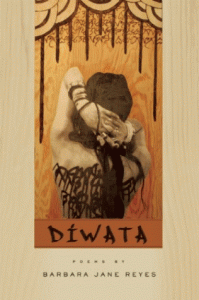
- bough breaks by Tamiko Beyer | Meritage Press 2011 | $12.50
The title of Tamiko Beyer’s first chapbook, bough breaks, evokes not just the creepy nursery rhyme, but also plant metaphors and motifs running through the poem-sequence. On the very first page there is “deep moss,” “bloomer,” and the “instinct” that “rises / late” from “whatever field”: whatever it is, this field has conceptual dimensions as well as spatiality. Shortly thereafter, the narrator tells us, “I construct syllabic fields,” suggesting with the simple present tense a habit, a pattern, perhaps something involuntary—and in this field, language itself, like foliage, must be attended to “like watering.”
These language-pastures seem to have once in the past(oral) contained the narrator until this instinct, to be a mother, escapes—pretty much like a protuberance—and causes a being-body to leak through. Queer desire is already a transgression, “chaotic.” By challenging the narrative that queer sexualities are non-reproductive, the maternal instinct turns the queer body excessive over and above its already-excess.
bough breaks seeks to interrogate this protuberance, this leaking, and its limits. It is fuelled by yearning: “will there be / between us a darling?” Yearning pushes through the body of the poem in the form of white space. Forms are invented to strike off authorized definitions of conception (biological as well as artistic), to prefigure the politics of a queer couple raising a child so as to question gender (“we would …. open mother to repetitions”), to consider how options for child-getting are often embedded in contexts of violence and capitalistic greed (and is there really a choice), to destabilize both the “natural” and the “not natural” in “queer” and “motherhood” (and sneaky iterations of everything in between), to circulate even more questions around adoption and embryo adoption (check out that play with “play” and “pay” on page 24!).

